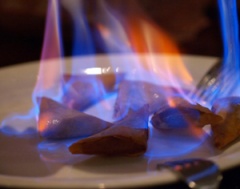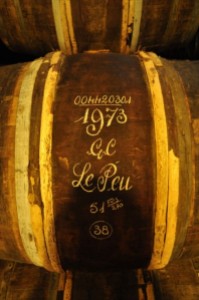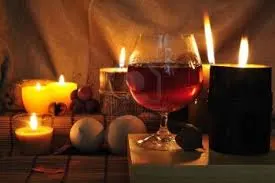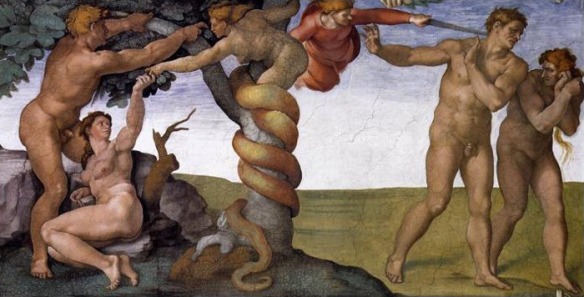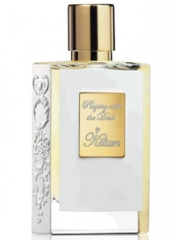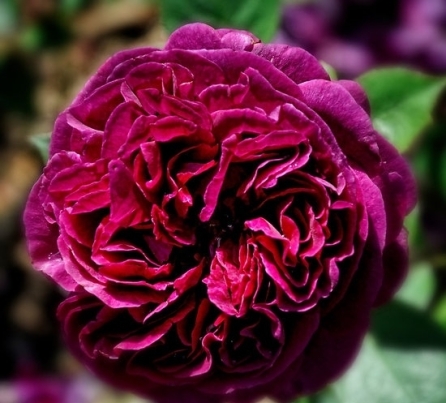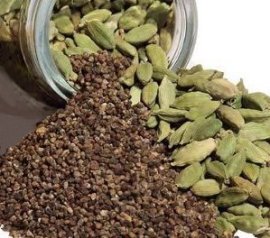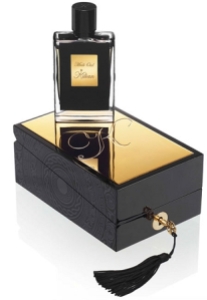The joys of Mysore sandalwood are ostensibly and supposedly replicated in Sacred Wood, the latest fragrance from By Kilian. Not in my opinion. Not even remotely.
Sacred Wood was created by Calice Becker, and I think the story behind its creation is essential to understanding the limitations of the scent. As Luckyscent explains, Calice Becker originally intended the scent to be nothing more than a base for other fragrances. Kilian Hennessy loved it so much that he decided it should be a solo scent, all by itself, and with nothing else added. Sacred Wood is therefore meant to be a simple soliflore designed to recreate the smell of Mysore sandalwood via other means. To quote from Luckyscent:
No longer available to perfumers since it was over-harvested, Mysore sandalwood (Santalum album) is one of the ingredients they miss the most. Calice Becker had long been working on a blend that would reproduce its complexity: the warm, rosy, smoky, creamy, spicy facets that make the legendary wood such an irreplaceable material.
Though originally intended as a base, the composition worked so beautifully on its own, and within the theme of the collection, that Kilian Hennessy snapped it up for the last episode of his Asian Tales. Sacred Wood conjures the mystical scent with amazing accuracy: like its model, it is so rich and facetted it is a fragrance in and of itself. Its silky, sensuous scent is amazingly long-lasting, though never overwhelming. It is the answer to the prayers of all sandalwood lovers.
Personally, I think Luckyscent is completely delusional if they think Sacred Wood conjures up the mystical beauty of Mysore sandalwood with any accuracy. Regardless, they provide the following list of notes for the scent:
Steaming milk accord, sandalwood, carrot, cumin, elemi, cedar wood.
Sacred Wood opens on my skin with green Australian sandalwood and sandalwood synthetics. The wood is green — very green — with grassiness and a miniscule touch of medicinal, herbal sourness underneath. It’s infused with the steamed milk accord which smells very authentic. Raw carrots and a touch of dry cedar lurk at the edges.
There is a distinct whiff of synthetics underlying the scent. Elena Vosnaki of The Perfume Shrine recently had a wonderful article on Fragrantica called “Synthetic Pathways to Sandalwood Notes,” regarding the various sandalwood substitutes on the market. I encourage you to read the piece in full if you’re interested, but I’ll quote some relevant sections here:
Several synthetics rose to the task of replicating [Mysore], often at a quite elevated cost despite their man-made aspect, and many times entering into venerable “modern classics.”
Nowadays many of those synthetics are used in combination with or attendance of the harvests of Mysore-identical sandalwood trees being farmed on Australian soil. These are trees of the India native species and not of the different, native Australian sandalwood (Santalum spicatum, such as the one used in Le Labo’s Santal 33 which is a different species with a different, sharper and lightly smoky scent profile, nor of the New Caledonia sandalwood variety (steadily gaining in popularity). […][¶]
Among synthetic sandalwood notes, Polysantol, a former Firmenich trademark, is quite popular thanks to its intense diffusion and realistic replication. Otherwise known as santol pentenol due to its structure, it enters many a fragrance composition thanks to its part herbal, part lived-in warmth. Beta santalol or technically (-)-(1’S,2’R,4’R)-(Z)-beta-santalol is also a nature identical typical sandalwood note. […][¶]
Ebanol [(1S,2’S,3’R)-Ebanol], a Givaudan trademark, is noted for its potency. Symrise proposes its Fleursandol which has a very strong, animalic-laced sandalwood note with floral elements surfacing. […][¶]
Javanol, Ebanol, Sandela, Santaliff (IFF santal mysore core), and Santalore are extremely powerful and true to sandalwood synthetics. In fact this might explain the curious effect one experiences when handling them: it was enough to smell a 10% dilution to anesthetize my nose for several hours later, a state I was taken out of by squeezing fresh lemon juice. A perfumer must be cautious and restrained when using them in order not to end up making the wearer of the finished fragrance tired and anosmic to them. Extreme dilution (even lower than 0.5%) is recommended, as alongside Iso-E Super (woody cedar) and methyl ionone (violets) those notes cause rapid nose fatigue.
At least one of those synthetics is present in Sacred Wood, and noticeable in varying degrees from the perfume’s very start to its dying moments on my skin. And no, it does not authentically recreate the smell of Mysore sandalwood. There is a comment to the Fragrantica article where “Eeyore III” quotes Luca Turin on why chemical synthetics fail to properly reproduce the scent of actual Mysore wood:
The reason synthetics don’t smell (that much) like sandalwood has been explained, chemically, by Luca Turin: “(Z)-(-)-beta-santalol, the molecule present to about 25 per cent in natural sandalwood oil and largely responsible for its gorgeous smell, is, synthetically speaking, a real back-breaker. The best total synthesis to date is an eleven-step affair, and any research chemist who tried to talk his production colleagues into making this would be quickly shouted down.“– L. Turin,The Secret of Scent p.77.
What I smell in Sacred Wood is green — all the way through. And greenness is not what I associate with Mysore sandalwood. It is redness. Dark, rich, red spiciness, with slightly smoky creaminess. I grew up in a time when Mysore was in almost every Oriental perfume, while shops sold Mysore beads, Mysore boxes, Mysore sculptures, and everything else in sight. I know what Mysore smells and looks like. And not one iota of that smell is evident in Sacred Wood.
Before you mention the new Australian plantation with its Indian Mysore trees, let me say that I’ve smelled that, too. I was sent a small bottle of the oil by the company as part of what was meant to be a coordinated multi-blog review or Basenotes article to praise its merits. I could not do so, and wrote bluntly that it did not smell at all like Mysore to me, so my comment was not used.
To me, that Australian plantation wood was green. Green, green, green with sour buttermilk and grassy undertones, along with an occasional medicinal touch. The trees may ostensibly be Mysore, but they’re incredibly young. I think it’s going to take another 60 years, at a minimum, for them to age enough to take on a true Mysore aroma. They are not there yet, not even remotely. I wouldn’t be surprised if Sacred Wood contains some oil from that lone Australian plantation, because I have mentioned the word “green,” yet?
I will admit with all honesty that I’m the wrong person to be writing a review of Sacred Wood. I am a die-hard Mysore sandalwood snob, and I cannot stand the Australian varieties — whether the Santalum album from that plantation, or the Australian Santalum spicatum cousin. I dislike both green sandalwood, and the generic beigeness of the Australian variety. I don’t think the latter even deserves the name “sandalwood” at all.
In fact, I sometimes think that all perfumers should stop using the word entirely and substitute “beige woods” unless they are spending a king’s ransom on the actual stuff. Neela Vermeire has done so for her perfumes, with the spectacular Trayee having the greatest amount, and so has Laurent Mazzone for LM Parfums‘ Hard Leather. Chanel‘s beautiful Bois des Iles supposedly has no sandalwood in it at all, but Jacques Polges has successfully recreated the smell through some miracle, so he gets a total pass from me and much worship for his wizardry. All the rest of the perfume houses should bloody well call the wood something else entirely. Yes, it is that much of a sore point for me.
Sacred Wood did not put me in a good mood, as you may have noticed. I tried to like it, I really did. I simply couldn’t get past the greenness, or the synthetic twang in the base. At one point, I told myself to approach it like a non-sandalwood fragrance, and to see the good in Sacred Wood. So, the rest of this review will be me trying my best, lying to myself, and pretending to be someone else.
Sacred Wood’s opening is interesting, I suppose. The steamed milk accord is truly authentic in feel, though it occasionally flashes as “sour milk” on my skin, in a way that replicates badly boiled milk a little too closely for my liking. The cold carrots remind me a little of how iris can be; I’m not crazy about that aspect, either. The cumin doesn’t appear in a distinct way at all, and the elemi initially doesn’t translate either as something lemony or as the wood’s more common smoky, dry, peppered features.
For the most part, Sacred Wood’s opening on my skin is merely a blend of boiled milk, green Australian wood, and cold carrots with a synthetic twinge. It’s a very strong bouquet initially, but thin in body, light in weight, and sheer. It lacks oomph or much character, if you ask me, and I’m saying that in my pretend role as someone who supposedly doesn’t know or care about Mysore sandalwood.
Sacred Wood changes at the end of the first hour. The elemi’s smoky, peppered sides rise to the surface, the perfume turns smokier, the milky accord starts to fade away, and the carrots vanish. The sour undertone to the fragrance remains, though it waxes and wanes in its visibility over the next few hours. Oddly, the sweetness and spiciness of the “sandalwood” also vary. Sometimes, the wood seems to have turned sweet and spicy, to go with that new touch of smokiness. The majority of the time, however, it’s either sour, the grassiness reappears, or the perfume just continues on its simple trajectory of green “sandalwood” with elemi smoke.
One thing to be said for Sacred Wood is that its greenness turns creamy. Roughly 2.5 hours into the perfume’s development, it lies just an inch above the skin as a very creamy, smooth, slightly smoky sandalwood and elemi fragrance. The synthetics retreat fully to the sidelines, and… well, that’s about it. For hours. And hours. Creamy green woods with elemi. At the end of the 7th hour, the elemi starts to fade away, and the first touch of the sandalwood synthetics returns. By the start of the 9th hour, Sacred Wood is green santal with synthetics. And it remains that way until it finally dies away 12.75 hours from the start.
I was bored out of my mind, and spent a good deal of that time fantasizing about anything else I could put on my skin. Even as someone pretending not to have issues with Australian “sandalwood,” Sacred Wood doesn’t come across as anything particularly interesting. It is a bloody one-note trajectory that starts as boiled milk green sandalwood, turns into lightly smoked green sandalwood, and then ends as green-beige sandalwood. I always say that there is nothing wrong with linearity if you like the scent in question, but I obviously don’t. And, come on, this is a simple base accord that Kilian Hennessey would like to charge you $245 for the supposed privilege of wearing. I realise there are cheaper refill or travel options, but no thanks. To any of it.
Yes, I’m being peevish, and yes, perhaps that’s unfair. But, dammit, I’ve been a die-hard Mysore sandalwood lover for over 30 years, and it’s really hard to wrap my head around a scent like this one. It’s not even trying to fix the problem or to compensate for the limitations by adding more elements to create an end result that is closer to the real thing. That’s the real kicker for me. Plenty of perfumers do that, like Serge Lutens in some of his santal creations where additional spices or accords are brought in to bridge the gap between the Australian wood and the synthetics. Not here. It’s a simple, occasionally creamy, green wood base that somehow Kilian Hennessy thinks is sufficient all by itself. It’s not. And I feel the same way about it as I do when L’Oreal tries to pass off the disgusting modern “Opium” as the real thing. It’s adding insult to injury.
At least one blogger out there seems to understand. Robin at Now Smell This says in her review of Sacred Wood, “if you’re an old-school sandalwood fiend looking for a fix, it might not hit the same spot.” No, it bloody well doesn’t. Parsing her review carefully, and noticing her statements in the comment section, I suspect she feels the same way as I do about Sacred Wood, but she’s simply tactful and diplomatic in a way that I can’t be. She writes:
Sacred Wood opens on citrus-y, spicy wood; it’s not a dead ringer for my long-time love, Diptyque Tam Dao, but it reminded me of Tam Dao right away: the opening has that same sheer but wood-focused feeling, at the other end of the spectrum from the more ornately decorated sandalwood trio from Serge Lutens (Santal Blanc, Santal de Mysore and Santal Majuscule). As the citrus burns off, Sacred Wood moves to the middle: it gets spicier and more milky-creamy, but at the same time, the woods get softer and more indistinct.
It’s closest to the ‘olfactory impression of an authentic Sandalwood from Mysore’ in the middle stages. Eventually, it’s a mild woodsy blend, reasonably sandalwood-y but without the richness of old-school sandalwood fragrances. If you’ve never smelled an old-school sandalwood fragrance, that won’t matter to you, but if you have one on hand, you’ll notice how comparatively thin the base of Sacred Wood is. I wore Sacred Wood next to a drop of Santal Blanc and a drop of Chanel Bois des Iles extrait,2 and the Sacred Wood, smells, well, modern. Obviously, you may or may not prefer it that way. […][¶]
Verdict: I was expecting a sandalwood-bomb, and Sacred Wood isn’t exactly that. It’s a lovely quiet woods scent, though, very wearable, and not at all dull[.]
We shall have to agree to disagree on everything, but how Sacred Wood doesn’t measure up to actual “old-school sandalwood fragrances,” and how “thin” its base is in comparison. I suppose her feelings can be understood, given how much better her experience and version of Sacred Wood was to mine. Green-beige woods and synthetic sandalwood in a dead flat-line are most certainly dull, in my opinion.
The best thing that can be said for Sacred Wood is that it’s smooth and I suppose it’s wearable, especially if you have never experienced Mysore sandalwood. That may be why it has some very enthusiastic reviews on Fragrantica. You can read them if you’re interested. I’m having great difficulty in not writing, “Meh” to everything, or banging my head against a wall. So, it’s probably best that I end this here and now. I shall seek comfort in the arms of Crabtree & Evelyn‘s vintage, discontinued Extrait de Mysore Sandalwood, and mourn.














